Comparing Ladder Stand-Offs and Stays: What’s the Difference and When to Use Each
Working at height is a vital part of many industries, but it comes with risks that require proper equipment to ensure safety. Ladders are one of the most common tools for reaching elevated areas, but their stability and safety are critical concerns for workers. To address these concerns, ladder stand-offs and ladder stays are essential components that enhance the functionality of ladders. These tools improve safety, increase comfort, and prevent damage to surfaces.
In this article, we will dive deep into the differences between ladder stand-offs and ladder stays, helping you understand when and why to use each. We’ll also provide an overview of both ladder accessories and guide you on selecting the best solution for your specific needs.
What Are Ladder Stand-Offs?
Ladder stand-offs are safety devices attached to the top of a ladder to provide additional stability, increase space between the ladder and the surface it rests against, and prevent the ladder from slipping or causing damage to the structure. They are designed to improve ladder safety by preventing slippage and reducing the chances of the ladder falling over during use.
They are particularly useful in tasks such as roofing, window cleaning, maintenance, and other high-reach activities where the ladder is positioned against a surface. They create a wider and more stable base by ensuring the ladder maintains an optimal angle of inclination while providing extra room for the user to work comfortably.
Kirmell Ltd offers a range of ladder stand-offs designed for various industries and applications. These products are built to offer maximum stability and are easy to install on most standard ladders.
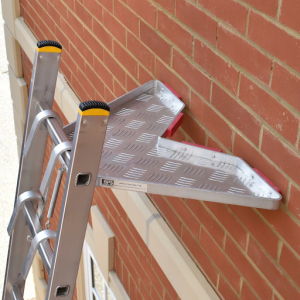
What Are Ladder Stays?
Ladder stays are similar to ladder stand-offs but serve a slightly different function. Ladder stays are designed to stabilize the ladder and help keep it securely positioned against a building or structure. They are often used when working on uneven ground or on structures that do not provide adequate support for a ladder.
Unlike stand-offs, which provide additional space between the ladder and the structure, ladder stays are typically used to increase the lateral stability of the ladder. They are often used in situations where the ladder needs to be supported by the side of a building, preventing side-to-side movement. Ladder stays provide added security in high-wind conditions or when working in areas with limited support.
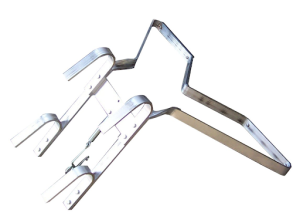
Key Differences Between Ladder Stand-Offs and Ladder Stays
While stand-offs and ladder stays both enhance ladder safety, they are suited for different situations. Below, we break down the key differences between the two:
1. Functionality and Purpose
- Ladder Stand-Offs: These are designed to keep the ladder stable by creating distance between the ladder and the wall, giving the user more space to work. They prevent the ladder from damaging the surface of the building and offer more room to manoeuvre.
- Ladder Stays: Ladder stays are typically designed to stabilize the ladder by providing lateral support, particularly when the ladder is placed against a wall or building. They prevent the ladder from swaying or tipping sideways.
2. Design
- Ladder Stand-Offs: Stand-offs are typically wider and more complex, designed to provide a stable support structure between the ladder and the wall. They can be adjustable and come in a variety of materials, such as aluminium or steel, depending on the required load-bearing capacity.
- Ladder Stays: Stays are often simpler, designed as arms or brackets that attach to the sides of the ladder. These stays are usually smaller and more compact than stand-offs and are mainly intended to provide additional lateral support.
3. Applications
- Ladder Stand-Offs: Best used in situations where the ladder needs to be positioned away from the structure to allow for maximum working space. These are ideal for tasks such as roofing, painting, and window cleaning, where workers need to reach around corners or surfaces.
- Ladder Stays: More commonly used in high-stability applications where the ladder might be exposed to high winds or placed in areas with uneven surfaces. They are particularly useful in construction and maintenance tasks where the ladder must be securely braced to prevent sideways movement.
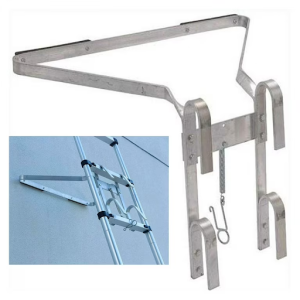
4. Ease of Use
- Ladder Stand-Offs: Stand-offs are relatively easy to install, often attaching at the top of the ladder and providing immediate support. They can be used on both single and extension ladders.
- Ladder Stays: Stays usually require more effort to attach and may involve securing the ladder stays with additional bolts or screws. They are typically used with larger ladders and offer stability for more extended operations.
When to Use Ladder Stand-Offs vs. Ladder Stays
The decision to use stand-offs or ladder stays largely depends on the type of work you are doing and the environment in which you are working. Here are some guidelines for choosing the right product:
When to Use Ladder Stand-Offs
- For Comfort and Accessibility: Use a ladder stand-off when you need extra space between the ladder and the wall. This is particularly useful for tasks like window cleaning, painting, or gutter maintenance where you need to move around freely.
- When Preventing Damage to Surfaces: If you need to protect the surface of the structure or building (such as siding or window frames), they will help prevent any contact between the ladder and the surface.
- For Greater Stability: If you are working on tasks where a more secure base is necessary (e.g., roofing or tree trimming), a ladder stand-off can help maintain a wider base of support, enhancing stability.
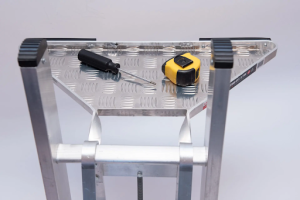
When to Use Ladder Stays
- For Lateral Support: Ladder stays are ideal for stabilizing the ladder when lateral movement is a concern. This is particularly useful in windy conditions or when working in high-traffic areas where workers might inadvertently knock the ladder.
- On Uneven Ground: If the surface is uneven or not level, ladder stays will provide the additional support needed to keep the ladder steady.
- For High-Exposure Jobs: For jobs that involve working at height in potentially high-wind conditions or on unstable surfaces, ladder stays provide added security and prevent the ladder from shifting sideways.
Kirmell Ltd Ladder Stand-Offs: Ensuring Maximum Safety and Efficiency
At Kirmell Ltd, we understand that safety is paramount when working at height. That’s why we offer a comprehensive range of ladder stand-offs that are designed to improve ladder stability and provide a safer working environment for your team.
Our Ladder Stand-Offs Include:
- Durable and Adjustable Designs: Kirmell Ltd’s ladder accessories are built from high-quality materials like steel and aluminum. They are adjustable to fit various ladder types, ensuring that you can achieve the right angle and stability for your work.
- Easy to Install: Our stand-offs are designed for quick and easy installation. You can attach them to your ladder with minimal effort, providing immediate support and safety.
- Enhanced Stability: With our stand-offs, your ladder will be securely positioned, reducing the risk of slippage and making it easier to complete tasks at height with confidence.
- Versatile Applications: Whether you are working in construction, maintenance, or roofing, our ladder stand-offs provide the necessary support to keep your ladder in place and improve your work efficiency.
Why Choose Kirmell Ltd Ladder Stand-Offs?
- High Quality and Durability: Built to last and designed for frequent use, Kirmell Ltd’s stand-offs are perfect for demanding environments.
- Safety Assurance: Our products help ensure that your workers are protected while working at height by improving ladder stability.
- Custom Solutions: We offer tailored solutions based on your specific needs, so you can rely on the right equipment for every job.
If you’re looking for ladder stand-offs that ensure safety, comfort, and stability, Kirmell Ltd has the solution. Contact us today for more information about our ladder accessories and how they can improve the efficiency and safety of your operations.
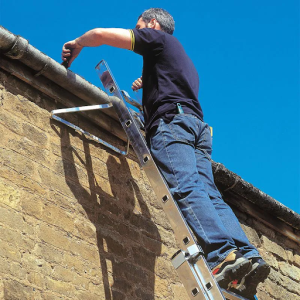
Conclusion
In summary, both ladder stand-offs and ladder stays are essential tools for improving ladder safety, but they are designed for different applications. The stand-offs provide more working space, protect surfaces, and offer enhanced stability for tasks where space and mobility are essential. On the other hand, ladder stays provide lateral support, particularly useful in high-wind conditions or when working on uneven surfaces.
By choosing the right tool for the job, you can increase safety, reduce the risk of accidents, and improve the overall efficiency of working at height. When in doubt, reach out to Kirmell Ltd for expert advice on selecting the best ladder stand-offs for your needs.
FAQs
What is the difference between a stand-off and a ladder stay?
Why should I use a stand-off when working at height?
Are ladder stays better than stand-offs for windy conditions?
Can I use both a ladder stand-off and a stay together?
What kind of jobs need a ladder stand-off?
Are these ladder tools worth it for DIY use?


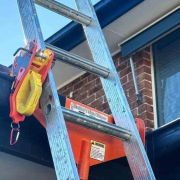
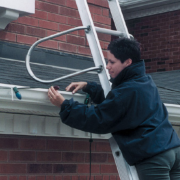


Leave a Reply
Want to join the discussion?Feel free to contribute!